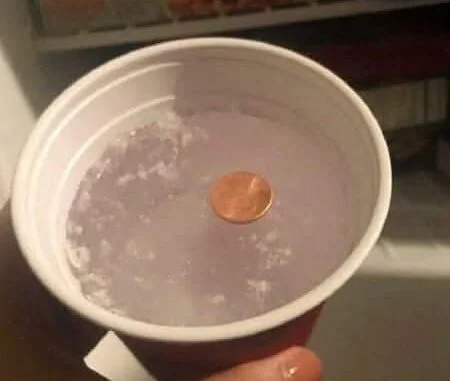
A Simple Trick to Determine If Your Frozen Food Is Safe After a Power Outage
Many of us have returned home after a vacation, business trip, or even just a weekend getaway, only to find that our digital clocks are blinking at the wrong time. This blinking clock often signals that a power outage occurred while we were away. While this may seem like a minor inconvenience, it can lead to more serious questions about the safety of the food in your freezer. Was the power out long enough for your frozen food to thaw, spoil, and refreeze? Or is everything still safe to eat?
It’s a dilemma many people face after time away from home, especially when you’re unsure how long the power was out. Without knowing when the outage happened or how long it lasted, determining whether your food is still safe becomes a guessing game. Perishable items like meat, seafood, dairy, and frozen meals are particularly vulnerable, as they can look perfectly fine but may be unsafe to eat after being refrozen. So, what should you do?
Fortunately, there’s a simple and effective trick you can use to help determine whether your frozen food is still safe to eat, and it requires only a few basic household items: a mug, some water, and a coin. This clever method was shared by Sheila Pulanco Russell during Hurricane Matthew in 2016 and went viral for good reason. It’s a simple, low-cost way to assess your frozen food’s condition after a power outage.
How It Works: A Simple Trick for Checking Your Freezer’s State
Here’s the step-by-step process for this effective method:
Fill a Mug with Water: Start by taking a regular cup or mug and filling it with tap water.
Place a Coin on Top: Once the water is frozen, place a coin (such as a quarter) on top of the ice and return the mug to your freezer.
That’s it! The mug, coin, and water will remain in your freezer, providing you with a simple visual indicator for future reference. When you return home after being away, the position of the coin will tell you what happened to your frozen food during the power outage.
What the Coin Can Tell You:
If the Coin Is Still on Top: If you find that the coin is still on top of the ice (or only slightly sunken), it means your freezer didn’t experience a full thaw. The temperature inside likely remained low enough to keep your food frozen, and your food should still be safe to consume.
If the Coin Is at the Bottom: If the coin has sunk to the bottom of the mug, it indicates that your freezer thawed completely during the power outage. This could mean that the food inside your freezer thawed, spoiled, and refroze, which may make it unsafe to eat.
This simple trick gives you peace of mind and removes the guesswork, especially when you return home after being away for an extended period. It allows you to make a more informed decision on whether your frozen food is still safe or needs to be discarded.
Why This Trick Matters
In the event of widespread power outages, such as during storms, hurricanes, or blizzards, many people face uncertainty about the condition of their food after a power loss. If a freezer stays powered down for too long, the food inside can thaw, potentially becoming unsafe to eat even if it appears to have refrozen.
Bacteria can grow on foods like meat, seafood, and dairy when they reach temperatures above 40°F (4°C) for too long. Even if the food looks fine and still feels cold, it may no longer be safe to eat. This trick helps you avoid risking foodborne illnesses by giving you an easy way to assess whether it’s time to toss your frozen goods or if they’re still good to go.
Use This Trick Anytime, Not Just During Emergencies
While this trick is especially useful during power outages from natural disasters or unexpected blackouts, it’s also a good idea to keep this method in your freezer as a precaution. By placing a mug with water and a coin in your freezer at all times, you’ll always have a reliable way to check if your food has been affected by a power outage, whether it’s a storm or just an unexpected blackout.
Be Safe, Not Sorry
While this simple trick can save you time, money, and prevent unnecessary waste, Sheila Pulanco Russell also emphasized that if you ever feel uncertain about the condition of your food, it’s better to be safe than sorry. If you suspect your food has been compromised, it’s better to discard it than risk consuming spoiled food that could cause illness.
Sharing This Tip with Others
This easy-to-follow method is incredibly useful, and it’s worth sharing with your friends, family, and neighbors. Spread the word on social media or simply tell others about this life-saving tip. The more people who know how to check the condition of their food after a power outage, the better. It’s a simple solution that can make a big difference in preventing food waste and protecting health.
The next time you go on a trip, hear about a storm on the way, or experience an unexpected outage, take a few minutes to prep your freezer with this clever and simple trick. It costs nothing and could potentially save you from throwing away perfectly good food.
Advertisements
